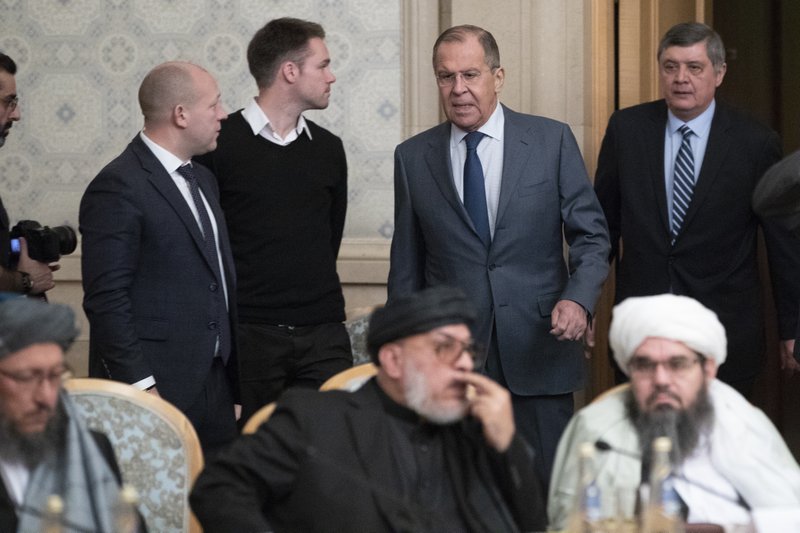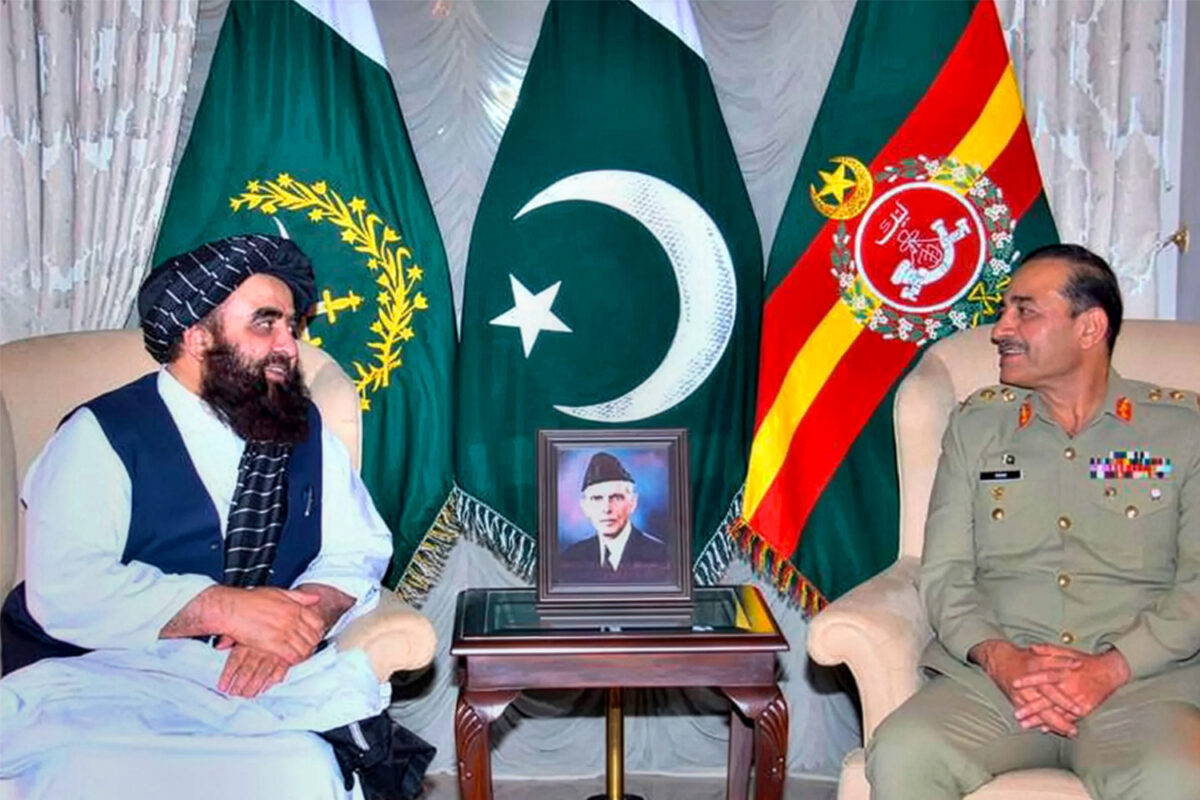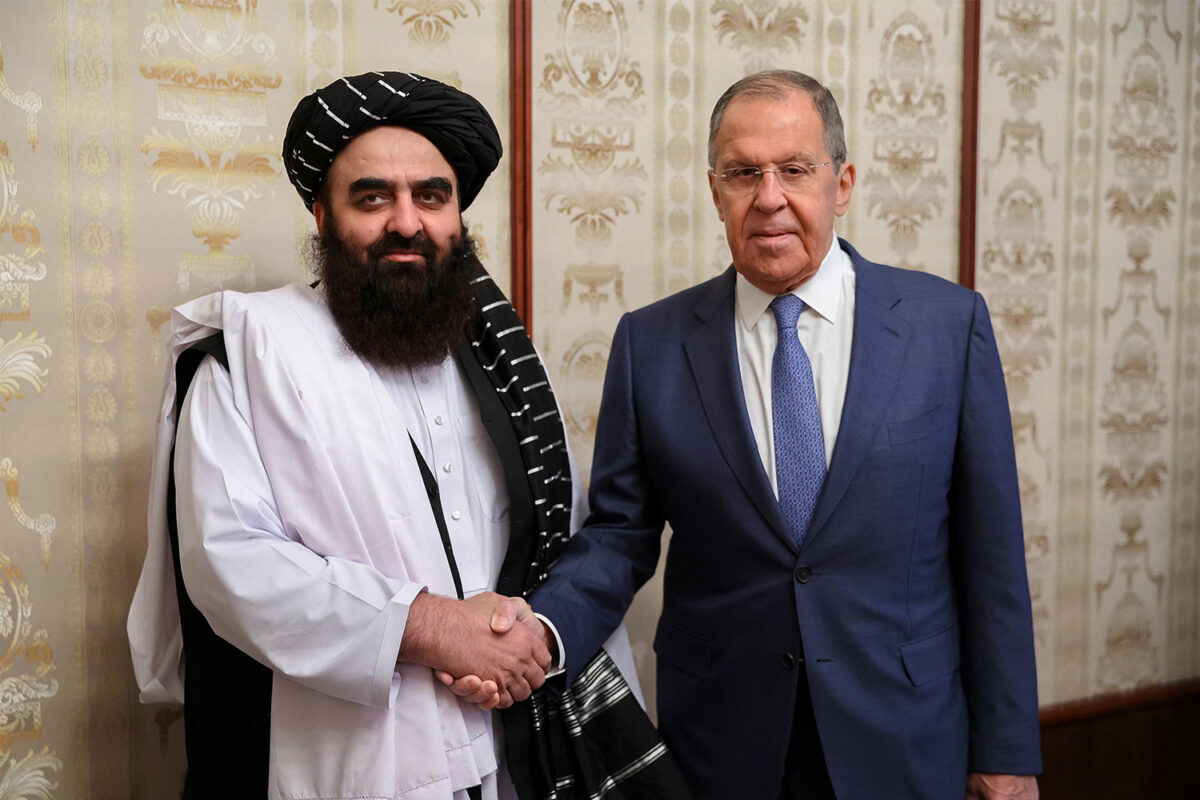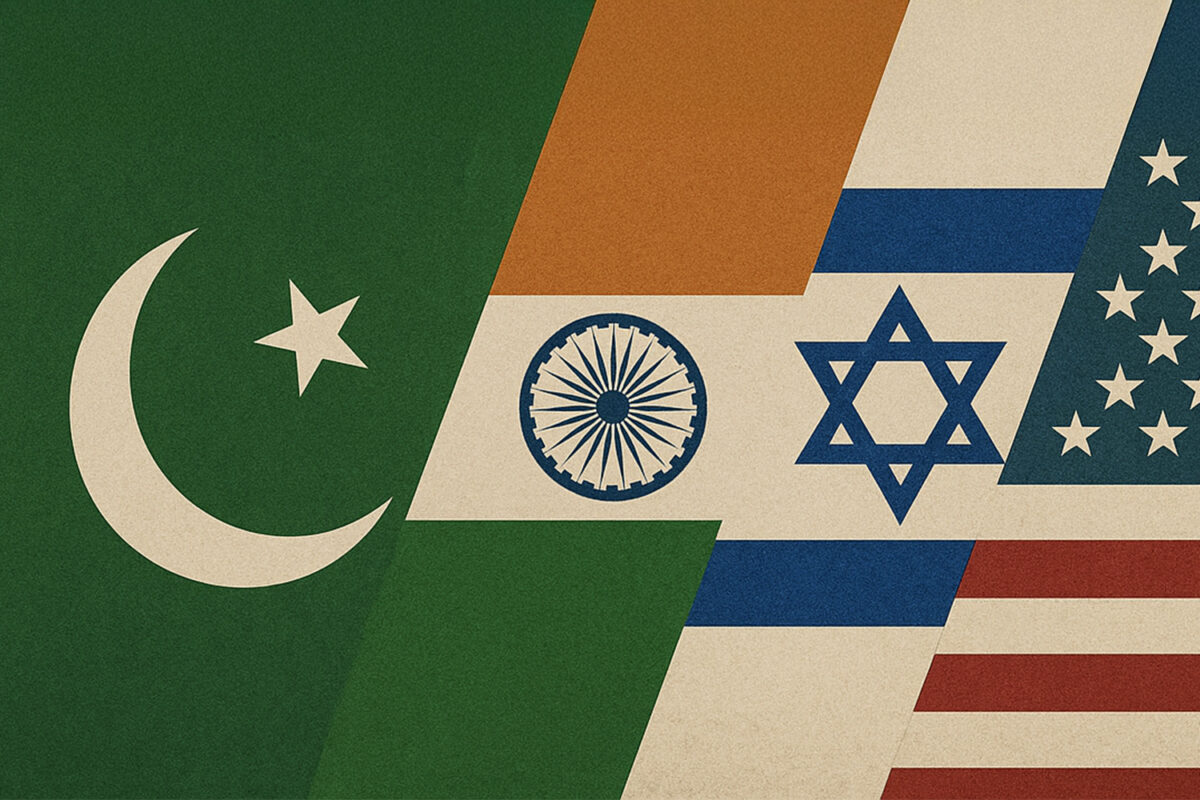After 19 years and 9 months and at a cost of over $2 trillion the US backed regime in Afghanistan collapsed after the Taliban surrounded the capital, Kabul. The collapse was swift and has shocked the world. US president Joe Biden blamed the Afghans for the collapse and said: “America’s mission in Afghanistan was never about nation-building.” The Taliban in their first press conference explained that the corrupt regime was never going to survive when the US abandoned it. Much of the western world is in shock at the rapid collapse of the regime with questions being raised of the commitment of western governments, given that many of their soldiers perished. Questions are being posed at the new Taliban government about how it plans to rule. Then there is the issue of the surrounding nations of China, Russia, Iran and Pakistan, what are their positions on the rapid developments in Afghanistan.
Whilst the collapse of the US backed Afghan regime was sudden and swift, this has been in the making for some time. Talk of the US leaving and drawing down its troops has been around for years, with the US planning to abandon the regime since 2010, when it first began talking with the Taliban. The reason for this is relatively straightforward. The US invasion of Afghanistan back in 2001 came on the back of US interests regarding Central Asia, which had for long been behind the iron curtain and within Russia’s sphere of influence. When the former Russian Soviet Union collapsed in 1991 and five new independent republics emerged Dick Cheney described the region as the new Middle East due to its hydrocarbon fuel resources. When the Taliban took over Afghanistan in 1996 it brought the stability needed in Afghanistan by defeating the tribal warlords. But the Taliban dragged its feet on the hydrocarbon pipelines and was considering other options other than US oil corporations regime change became the US strategy in Afghanistan – all before the events of 9/11.
The US plan was to overthrow the Taliban and install a new friendly regime, as it has done in Latin America, South-East Asia and the Middle-East. As with the propped regimes of the past, such regimes would run the country on a day-to-day basis and the US would pursue its strategic goals of pipelines and gaining influence in this case in Central Asia. Afghanistan was always a means to an end for the US never an end in itself. But the warlords the US put into power were corrupt, ineffective, incompetent and the costs multiplied as the years went on. The US invasion of Iraq from 2003 didn’t help. By 2009 when Barack Obama took office the US was clear it couldn’t militarily win and began informal talks with the Taliban, which turned into formal talks, which then turned into a peace treaty agreed in February 2020. The Taliban also concluded that it had drawn the US to a stalemate, and it saw talks as the ultimate way to get back into power. Once these talks were completed the Taliban expansion and takeover began and the US began pulling out its contractors and this was what ultimately led to the collapse of the Afghan regime.
Afghanistan was always a means to an end for the US never an end in itself. But the warlords the US put into power were corrupt, ineffective, incompetent and the costs multiplied as the years went on
Being the global superpower means the US has to be everywhere to exercise it’s influence and the costs of managing Afghanistan were extortionate relative to the aims the US had. The US in 2010 also began engaging the surrounding nations to contribute to Afghanistan and the US would then manage from afar. This is what has taken place this week. It looks messy, it’s embarrassing for the US, its politicians are falling over themselves to justify why they did this, but strategically Afghanistan was always a means to an end for the US. It was never a project to spend 20 years propping up a regime. In his speech at the White House on 14 April 2021, President Biden made this clear: “There are many who loudly insist that diplomacy cannot succeed without a robust U.S. military presence to stand as leverage. We gave that argument a decade. It’s never proved effective…. Our diplomacy does not hinge on having boots in harm’s way.”[1]
The US strategy of using Afghanistan in order to secure Central Asia required a stable government in Afghanistan. The regime the US established with warlords back in 2001 has been a complete failure. Therefore, if the Taliban can achieve stability in the country, this achieves US interests as the Taliban have no regional ambitions and lack the capability to project power beyond Afghanistan. Despite taking over the whole country, the Taliban are no threat to US strategic interests.
The Challenge of Legitimacy
The Taliban will now need to transition from a guerrilla movement to a regime. The desire for legitimacy has seen them in the first few days engage in outreach with the surrounding nations. In its first press conference on 17 August its spokesman confirmed Afghanistan will not be a haven for transnational fighting groups. The Kabul airport continues to operate despite it being overrun by Afghans looking to leave the country. Western military bases in Afghanistan have not been attacked by the Taliban and for the last year the Taliban have protected them from attacks by rival groups under its agreement with the US.[2]
The Taliban of today are very different from the Taliban of the past. Today the Taliban regularly meet and hold talks with the Iranian regime in Tehran and meet Russian officials in Moscow, as well as visit China, something unthinkable a few decades ago. Whilst much is made of the Taliban’s isolationism the reality is the movement has been engaging with surrounding nations for the best part of a decade.
The Taliban faces major domestic challenges. After two decades the country remains fractured as the US backed regime did little to improve the national infrastructure or set up effective institutions. Here the Taliban will need to engage with the international community in order to access trade and development assistance. This was something denied to the movement back in the 1990s.
The Taliban of today are very different from the Taliban of the past. Today the Taliban regularly meet and hold talks with the Iranian regime in Tehran and meet Russian officials in Moscow, as well as visit China, something unthinkable a few decades ago
Pakistan’s Strategic Depth
The fall of the government in Kabul has seen very little response from the Pakistan military. Pakistan’s civil leadership have made statements of concern about the deteriorating situation and the Afghans have removed the shackles of slavery. But the silence from the Pakistan army doesn’t conceal the major role it played in Afghanistan.
Pakistan has historically been involved in Afghanistan and played a central role in organising the mujahideen when the Soviet Union invaded the country in 1979. Pakistan’s strategic thinking has for long viewed Afghanistan as part of its strategic depth against India. It was this thinking that led Pakistan’s military and ISI to support the Taliban to power when the country was marred in a civil war in the 1990’s.
Pakistan sided with the US under pressure when she invaded the country back in 2001 and conducted military operations in its northern areas as the people there were supporting the Afghan resistance. The Haqqani network that sits on the Taliban leadership has long been used by the military to influence the Taliban. It was Pakistan that incarcerated Mullah Abdul Ghani Baradar, deputy to Mullah Omar in 2010 and released him in 2018 to lead the talks between the Taliban and the US in Doha, which ultimately led to the peace deal between the US and the Taliban.
It was Pakistan that incarcerated Mullah Abdul Ghani Baradar, deputy to Mullah Omar in 2010 and released him in 2018 to lead the talks between the Taliban and the US in Doha, which ultimately led to the peace deal between the US and the Taliban.
Whilst Pakistan does not have influence over all the Shur’a committees of the Taliban, the Taliban taking power means it countered India’s moves in Afghanistan, who backed the US-backed regime in Kabul.
The Frenemy in Tehran
Iran supported the US invasion of Afghanistan back in 2001 by providing military and intelligence assistance and expelled al-Qaeda and other Sunni militants from its territory at the US’s request. Iran played a key role in the northern alliance taking power and has taken part in infrastructure projects in the country which kept the West of Afghanistan that shares a border with Iran peaceful. When Mullah Akhtar Mansur became the Taliban leader in 2015 he began seeking to diversify the group’s sources of money and weapons. He visited Tehran on two occasions. Iran moved to formalise its relationship with the Taliban by allowing it to open a foreign office in Mashhad.
This was all on the back of Iran providing the Taliban in West Afghanistan with weapons, money and training. But on 21 May 2016, on a desert road in southwestern Pakistan, a US drone struck a taxi, killing Mullah Akhtar Muhammad Mansour who was returning from a trip from Iran. It’s likely the Iran-Taliban relationship was, after Mansur’s death, limited to the Shur’a committee in Herat, but with the Northern Alliance falling and Iran beginning talks with the Taliban long ago and with them now in power, the contacts are already there to ensure the 1990’s antagonistic relationship remains in the past.
When Mullah Akhtar Mansur became the Taliban leader in 2015 he began seeking to diversify the group’s sources of money and weapons. He visited Tehran on two occasions. Iran moved to formalise its relationship with the Taliban by allowing it to open a foreign office in Mashhad
Russia’s New Great Game
Whilst the mujahideen that make up the rank and file of the Taliban fought the Soviet Red Army in the 1980’s, this is all in the past. In 2016, Moscow disclosed its contacts with the Taliban. The Russian Foreign Ministry announced that it was sharing intelligence and cooperating with the Taliban to fight ISIS militants in Afghanistan. In 2017 Russia hosted peace talks between the Afghan government and the Taliban. The Russian foreign ministry confirmed: “The third round of consultations on the Afghan issue was attended by representatives of Russia, Afghanistan, China, India, Iran, Pakistan, Kazakhstan, Kyrgyzstan, Turkmenistan, Tajikistan and Uzbekistan.” This was the third meeting Russia hosted in four months to push for political negotiations. “The US had been invited to take part in the consultations but it refused [to attend] for reasons unclear to us.”[3]

Russia’s ambassador to Afghanistan praised the Taliban’s conduct as it took over Kabul. He said the group had made Kabul safer in the first 24 hours than it had been under the previous authorities. The comments by Ambassador Dmitry Zhirnov reflect deepening ties with the Taliban while stopping short, for now, of recognising the group as the legitimate rulers of a country. Russia for long faced insurgents from Afghanistan who headed towards Central Asia due to their transnational aims. But as the Taliban has always been a nationalist and local movement, in a complete reversal of history Russia now sees the Taliban with its national outlook as preferable in the war torn nation.
The China-Taliban Romance
China has been the most positive with the developments that have taken place this week in Afghanistan. China began giving Afghanistan considerable attention after geologists discovered nearly $1 trillion in untapped mineral deposits in 2010. It was after this discovery that China began to develop commercial and economic relations with Afghanistan, with the Metallurgical Corporation of China (MCC) pledging $3.5 billion to develop the Aynak Copper mines. China National Petroleum Corporation also helped to create the first site for the production of oil in Afghanistan.
China realised that it couldn’t exploit any of Afghanistan’s mineral resources without a stable Government in Kabul and stability and security across the country. For these reasons China has supported the US constructed political architecture but also began official contacts with the Taliban.
In 2015, China hosted secret talks between representatives of the Taliban and Afghan government in Urumqi, the capital city of the Xinjiang Uighur Autonomous Region. In July 2016, a Taliban delegation — led by Sher Mohammad Abbas Stanekzai, then the group’s senior representative in Qatar — visited Beijing. During the trip, the Taliban representatives reportedly sought China’s understanding and support for their positions in Afghan domestic politics. China’s engagement efforts intensified in 2019, as peace talks between the US and the Taliban gained speed. In June of that year, Mullah Abdul Ghani Baradar, the head of the Taliban’s political office in Qatar, visited China for official meetings on the Afghan peace process and counter-terrorism issues. Then on 28 July 2021, Chinese State Councilor and Foreign Minister Wang Yi held a high-profile official meeting with a delegation of nine Afghan Taliban representatives, including Mullah Abdul Ghani Baradar. This meeting was unprecedented in its publicity, the seniority of the Chinese attendees, and the political messages conveyed. Most notably, Wang used the meeting to publicly recognise the Taliban as a legitimate political force in Afghanistan.

The Taliban have already reciprocated. In an exclusive interview with This Week in Asia, on 9 July 2021 Suhail Shaheen said the Taliban would guarantee the safety of Chinese investors and workers if they were to return. “We welcome them. If they have investments of course we ensure their safety. Their safety is very important for us.” Suhail also said the Taliban would no longer allow China’s Uyghur separatist fighters, some of whom had previously sought refuge in Afghanistan, to enter the country.[5]
Then on 28 July 2021, Chinese State Councilor and Foreign Minister Wang Yi held a high-profile official meeting with a delegation of nine Afghan Taliban representatives, including Mullah Abdul Ghani Baradar. This meeting was unprecedented in its publicity. Most notably, Wang used the meeting to publicly recognise the Taliban as a legitimate political force in Afghanistan
Whilst much of the world watched in astonishment at the sudden collapse of the Afghan regime and the return of the Taliban, all the key global and regional players have for long been manoeuvring to what was always inevitable: the collapse of America’s Afghan regime and the return of the Taliban. Against the world’s superpower, what seemed like an impossibility became an inevitability, for even the US had been negotiating with the Taliban for over a decade and the regional powers have been developing their own relations as well as organising peace talks between the different factions in Afghanistan. The pace at which this political outcome unravelled in a matter of hours and days has surprised the world. However, the inevitability of the outcome itself was sensed long ago with negotiations by international and regional powers with the Taliban always pointing to a foregone conclusion.
[1] Remarks by President Biden on the Way Forward in Afghanistan | The White House
[2] EXCLUSIVE As U.S. prepared exit, Taliban protected foreign bases, but killed Afghans | Reuters
[3] Russia offers to host Taliban-Kabul talks (tribune.com.pk)
[4] The Story Behind China’s Long-Stalled Mine in Afghanistan – The Diplomat




